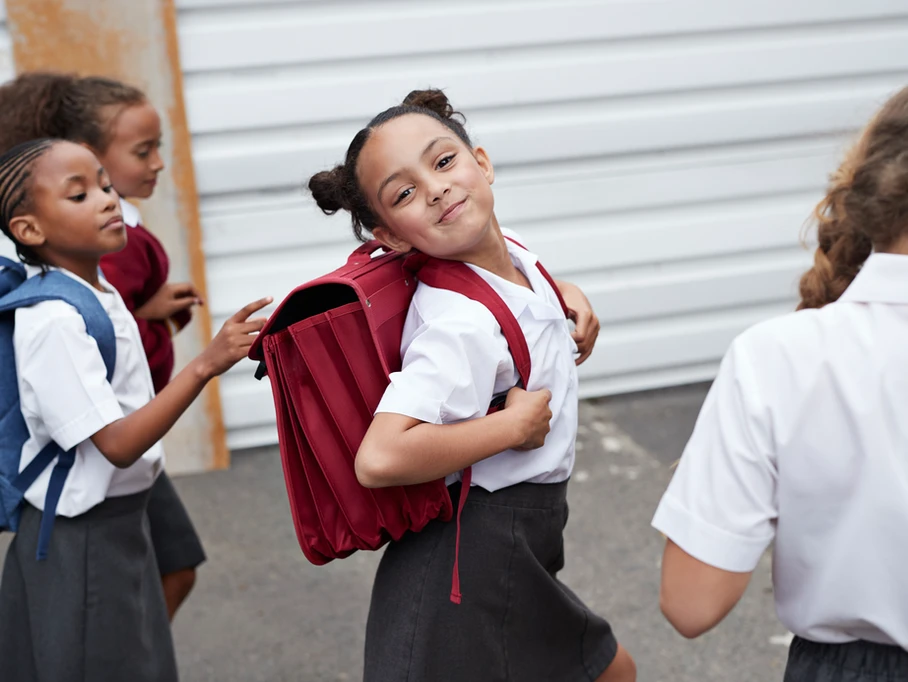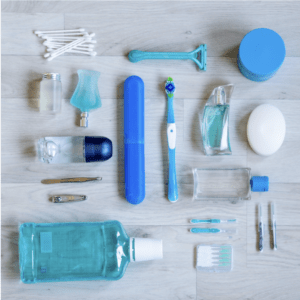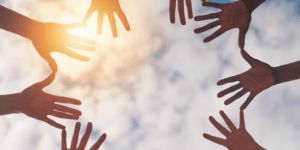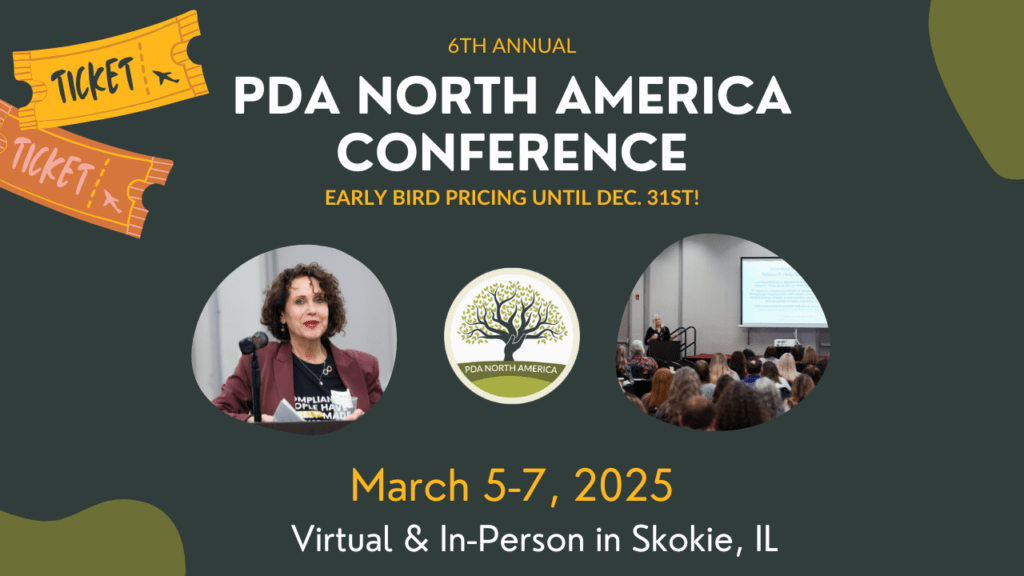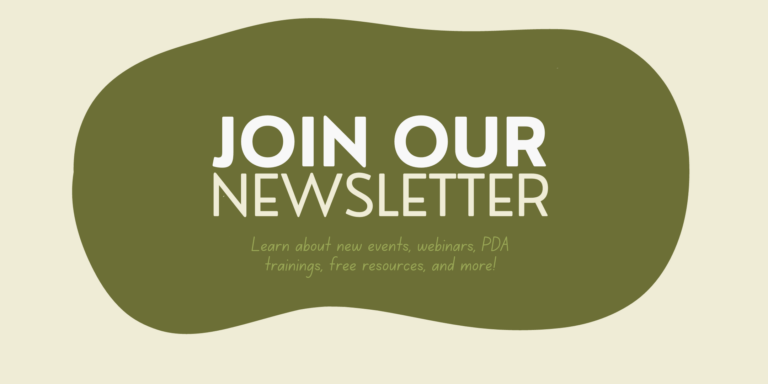PDA stands for Pathological Demand Avoidance or Pervasive Drive for Autonomy, a little-known profile of Autism that is gaining awareness.
I believe PDA is best understood as a nervous system disability in which a person’s autonomic nervous system goes into threat mode when faced with a lack of autonomy, control, or social equality. Conventional school settings are chock full of moments that take away children’s autonomy, control, and social equality. A survey by the PDA Society in the UK, where PDA is an official diagnosis, found that 70% of PDA kids were not able to go to school. My own child burned out at school by age 5, and is now unschooled at home (child-led homeschooling).
Most PDA children would do best in a spacious room with 1:1 aides available, spending their days doing self-directed independent projects based on their interests. There are alternative schools that are set up like this, but of course most families cannot afford private school, and even those who can may not be within commuting distance from a school that fits their child’s needs. PDA children often do beautifully in unschooling – child-led homeschool. This is what we do with my son. I wish he hadn’t needed to burn out badly before I knew what he needed to thrive.
For families who need to stay in the public school system for economic or other reasons, what can educators do to support these vulnerable kiddos who are in a learning environment decidedly not built for their brains?
To support PDA kids who are attending school, educators can make 7 powerful mindset shifts:
1) Understand PDA is a nervous system disability, not a behavioral disorder.
Treat opposition and meltdowns as expressions of autonomic threat response, akin to panic attacks. Punishing a PDAer for opposition or a meltdown is a cruel as punishing a person for having a panic attack or a seizure. Restraining a panicking PDAer will likely traumatize them and make school attendance much harder. Work to decrease demands, de-escalate, and create a PDA friendly learning environment (read on!) so that panic does not happen in the first place. If a child is having frequent meltdowns in school, it’s a sign they are heading towards or in burn out.
2) Imagine your PDA student has a physical disability that flares up, & school is gym class.
For a PDAer to be able to stay in school, their felt sense of safety needs to be the priority so their nervous system doesn’t get “inflamed.” Can’t work on math today? No problem. Need extra time on this preferred activity? Awesome. “But you did it yesterday!” isn’t relevant because it’s the nature of the disability to fluctuate. The more you push a PDAer, the more threat is accumulated in their nervous system. Enough accumulation, and the child will not be able to attend school at all. Just as with a vulnerable physical disability, the goal is not conformity, or even to push for as much participation as possible. The goal is safety and health for a high risk child. Keep your eye on the big goal!
3) Ditch Extrinsic Rewards – or minimize them.
Brain science tells us that when our goal is to teach complex thinking or prosocial behavior, rewards are counterproductive in the long term. This has been known for decades, yet most schools continue to require teachers to have a positive behavior plan that includes incentivizing children for good behavior with rewards like food, stickers, prizes (and then of course there are grades…). Treats turn learning and prosocial behavior into adult-driven demands instead of what they really are – expressions of a child’s innate human drives for mastery, curiosity, and community. Kids do well when they can. If they can’t, they need support, not rewards.
For more on the science and anthropology behind this mindset shift I recommend:
Drive: The Suprising Truth About What Motivates Us by Daniel Pink
Punished by Rewards by Alfie Kohn
The Continuum Concept by Jean Liedoff
The Explosive Child by Ross Greene
But for PDAers, rewards aren’t just bad for learning. They’re bad for the nervous system. Why?
First, the doling out or withholding of a reward is an exercise of power. PDAers are hard-wired to go into threat response when someone is exerting power over us. This may not show up in the moment, but it accumulates in the nervous system.
Second, the prospect of a reward turns what might otherwise be no big deal for a PDAer into a demand. My son’s new teacher gave out rewards for not running in the classroom. All of a sudden, not running became a symbol of loss of autonomy for him. He wanted to please his teacher, but his threat response told him to run. He was caught in the middle, and burned out a few weeks later.
4) Provide true choice, not “forced choice.”
Resources on supporting PDAers in school often focus on giving the child choice: “You can do this math worksheet now, or the handwriting worksheet.” While this is better than no choice, notice that even here the child is losing autonomy. The assumption is that they will do one of the two worksheets. That is still a demand, and will be registered as a threat in their body. For a PDA child to feel safe, they need to actually have the choice to opt out or do something entirely their own way. This is the way they can stay in their thinking brain. A PDA student needs a child-directed option for when they can’t do what the rest of the class is doing – a screen, a sensory room, a hands-on project, a special interest, a book, hanging out with a favorite adult in the building.
5) Involve the Student’s Special Interest(s)
By nature, PDAers tend to be autodidacts who thrive in project-based learning based on our own interests (I think many kids learn best this way… but that’s another story!).
For some PDA children, school itself becomes a special interest. This is extremely lucky (it happened to me!), but it can’t be predicted or controlled.
Short of that, helping a child involve their special interest(s) in their school day and assignments can increase joy, wellbeing, learning, and ease for PDA kids and any Autistic child. This can include wearing clothes to school that are special interest-based, encouraging independent projects based on the interest, using worksheets that have pictures that connect to the interest, listening to the child info-dump about their special interest, treating the child as an expert in their interest, giving them an opportunity to present to the class about their interest (if that is a skillset they have available to them), and lots more.
6) Allow & Encourage Flow State
Autistic brains have
more attention for fewer things at a time. We thrive with deep dives into projects and subjects. Allowing PDA kids – and any Autistic person – to stay with an activity where they are deeply engaged instead of transitioning before they are ready will increase learning and joy, and decrease stress. This deep place of engagement and focus is known as
flow state. It’s a universal human experience that is key to our thriving in work and play. Flow state is important for every child, and crucial to the mental health of PDA kids – and Autistics in general. Yes, for Autistics flow can lead to hyperfocus that gets in the way of us meeting other needs. But that just means we need some support around how to manage flow – it does not mean we should be bringing Autistic children out of flow regularly. (See a
2023 study on Autistic people’s experience of flow for more).
7) Ask how things are going at home.
PDA parents often report school did not take it seriously when they said their child was struggling at home because the child seemed fine at school. PDAers are often “high masking” Autistics. Many PDA kiddos can perform at school academically and socially by going in “fawn” threat mode – which means people-pleasing out of fear, or by holding in the threat responses of fight/flight. The teachers see the child as fine. However! The threat response comes out at home – the child may be melting down, or having trouble meeting basic survival needs like eating, sleeping, toileting, hygiene. Schools must believe parents when they report this. A PDA child struggling at home needs a low demand approach at school, even if it looks like they are fine at school.
Ready to get 1:1 support for you and your PDA child or student?

